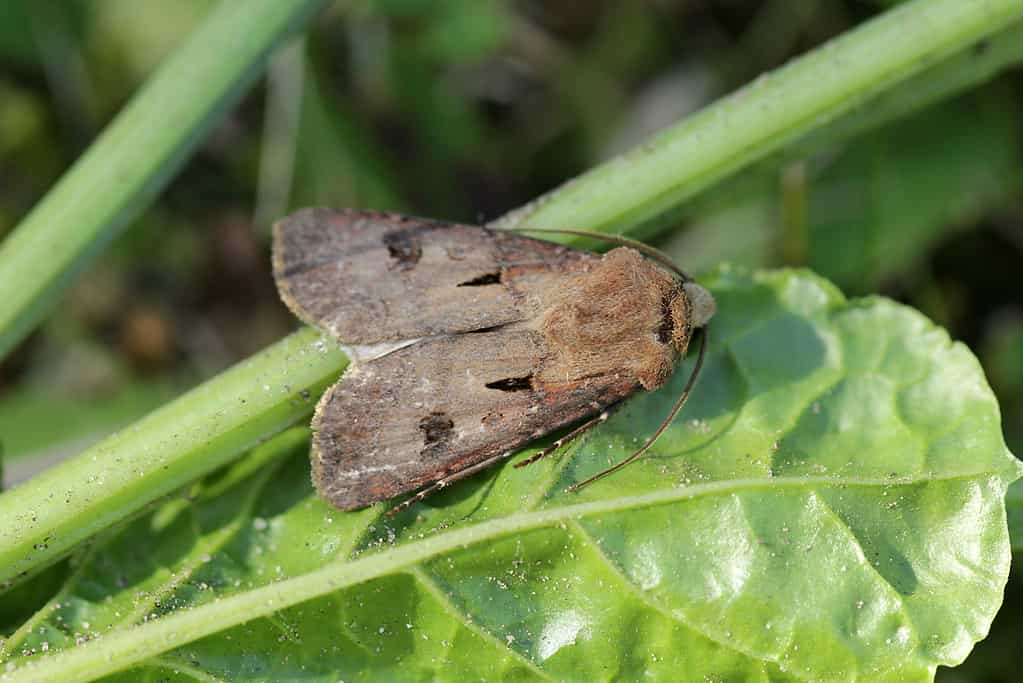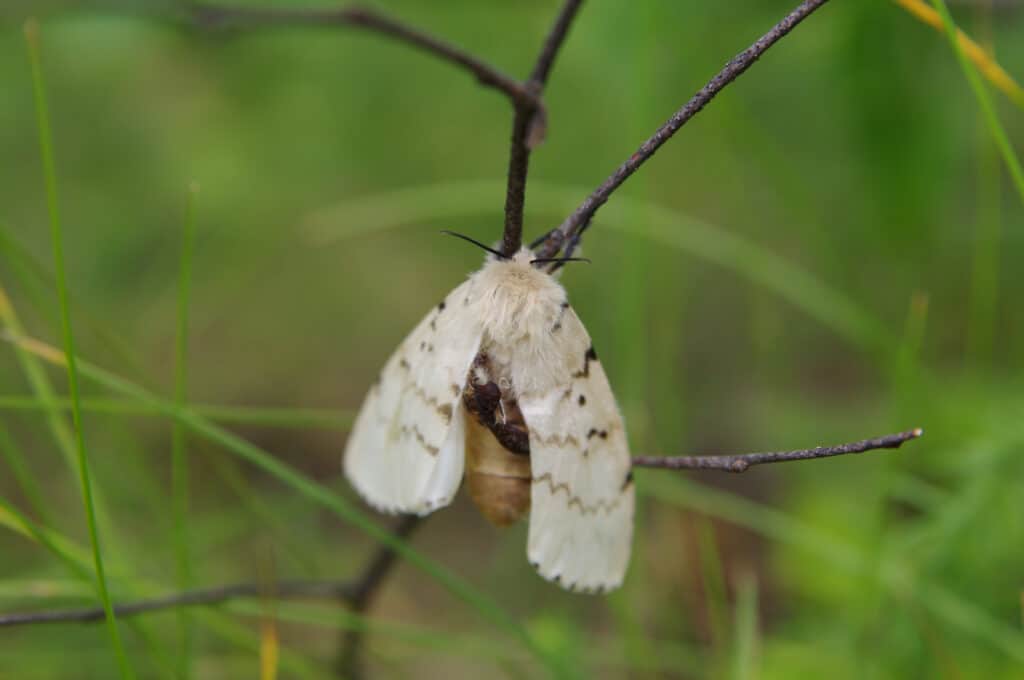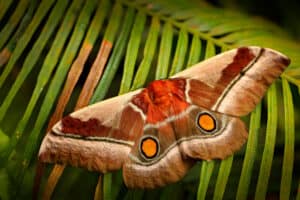There are several prevailing theories surrounding a moth’s attraction to light. There are things we can directly observe and record and then there are things that make little sense. We know, for instance, that most moths don’t flood porch lights. Instead, it’s a select few that we assume represent all of them.
The prevailing opinion is that it has to do with the moon or celestial events. Some moth species travel through the night air with the moon as a guide for orientation purposes. A brighter porch light becomes their new moon and, ultimately, it confuses them. However, that’s far from the only theory and it may not even be correct.
The fact is, there are several ongoing theories surrounding a moth’s attraction to light and if it’s even attracted to artificial light, to begin with. This is one of those instances where we have a ton of visual and tangible experience with a specific behavior, yet still can’t explain the behavior with a precise, irrefutable answer.
Possible Reasons Moths Are Attracted to the Light

Owlet moth relaxing on a leaf.
©iStock.com/Tomasz Klejdysz
Positive phototaxis is the term for a moth’s attraction to light. However, there are over a hundred thousand species of moth and a large percentage of them are negative phototaxis. When you see moths going crazy around a source of light, they are far from representative of all moths.
What we do know, is that UV light is an enormous attractant for certain species of moth. Ever since ultraviolet light became a thing in the late 30s to early 40s, people noticed the sudden influx of moths whenever a UV light is on at night time.
Keep in mind, however, that many moth species are incredibly adverse to UV light, such as the Old Lady moth (Mormo maura).
The Moon Theory
The moon theory is twofold. First, some scientists believe that moths use the moon as a marker to orient themselves in flight. When someone turns on their porch light, however, that light becomes the moth’s new moon since it is far brighter than the celestial object. Since the moth flies right by an artificial light source, it’s constantly trying to adjust course and maintain the angle.
This is why moths fly erratically around a light source, often slamming into walls, the light itself, and your face if you happen to be close enough. Moths aren’t incapable of flying in a straight line but they seem to be incapable of even a modicum of sensible flight when around an artificial light source.
The second moon theory is far simpler. Moths like the moonlight and fly higher to be nearer to it. It doesn’t make as much sense as moths using the light to orient themselves but, there it is.
Scent of Candles
A moth’s attraction to light is not exclusive to a singular source. They are just as attracted to something simpler, such as a candle flame (like moths to a flame) or a tiki torch. Some believe that the scent candles or torches give off is akin to the scents female moths give off.
Of course, this means that all of the moths descending on the scented light are most likely male. The thing is, moths congregate around non-scented sources of light as well.
Infrared/Pheromones
The infrared and pheromones theory was proposed by entomologist Philip Callahan of the US Department of Agriculture. The assumption is that moths mistake the infrared light for light reflected off female moth pheromones.
Ultraviolet Light Versus Flowers
Instead of a moth’s attraction to light per se, it may be they are swarming around what they assume are flowers. As pollinators, many moths are dependent on the ultraviolet color of certain flowers. The artificial light simply fools them into thinking it’s a giant, bright flower.
Light Pollution’s Affect On a Moth’s Attraction to Light

Gypsy moths are found everywhere except Antarctica and Australia.
©iStock.com/grannyogrimm
If you own a telescope and love to go stargazing in the evenings, you know the effect of light pollution on your ability to view the stars and planets. Well, as it turns out, you’re not the only one that artificial light negatively affects. Moths are victims of light pollution as well.
Florian Altermatt and Dieter Ebert, biologists with the Department of Evolutionary Biology and Environmental Studies and Department of Environmental Sciences respectively, published their work on the study of light pollution’s effect on moth behavior.
The study was simple enough. All the two biologists did was collect moth larvae from high-light pollution and low-light pollution areas. After releasing the moths in a well-lit environment, they discovered that the moths collected from high-light pollution areas had little interest in the light, while the opposite was true of moths collected from low-light areas.
The good news is light pollution or not, the existence of artificial light isn’t harming the moths, only affecting their behavior in dark and light areas.
Moths That Aren’t Attracted to Light
With over a hundred thousand moth species on the planet, there are more than a handful of moths who could care less if you leave your porch light on at night. In fact, that’s true with most moths and the only reason that a moth’s attraction to light is a subject of conversation is because of what we observe.
We see moths slamming into a naked light bulb on the front porch and automatically assume that artificial light is a ‘moth thing.’ In reality, you’re only witnessing a couple of moth species, possibly just one. There are even moths out there that actively seek out dark areas, such as the tissue moth.
Most moths that seek light sources won’t even turn toward the light unless they cross some invisible barrier in terms of distance from the light source. This distance is known only to them. Hawkmoths are more attracted to light during certain times of the year and less so in others.
Final Thoughts On Why Moths Are Really Attracted to Light
As it turns out, using the term ‘moths’ as a blanket statement concerning light attraction is false. Many species of moth could care less one way or the other and some even seek out the opposite. Some moths are attracted to light and those are the moths we see the most. Since artificial light is their thing, it brings them inside of our sphere of influence.
As far as the moths that are attracted to light, our understanding of the underlying mechanics of their attraction is not limitless. We have a few theories, explained above, and that’s all. For now, the absolute reason that moths gravitate towards artificial light is unknown. We simply have positive phototaxis and negative phototaxis, with much to learn in between.
Thank you for reading! Have some feedback for us? Contact the AZ Animals editorial team.








